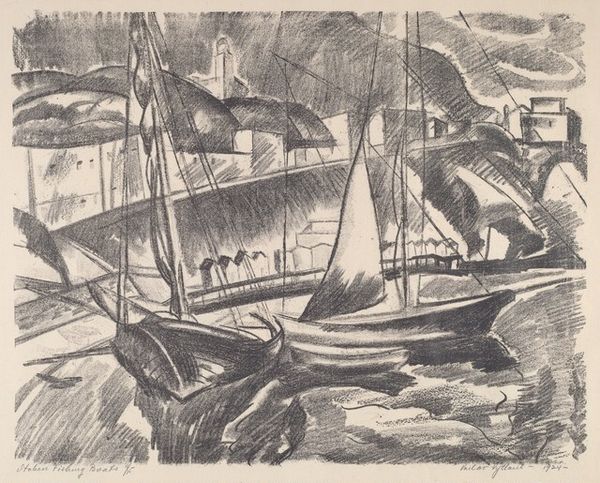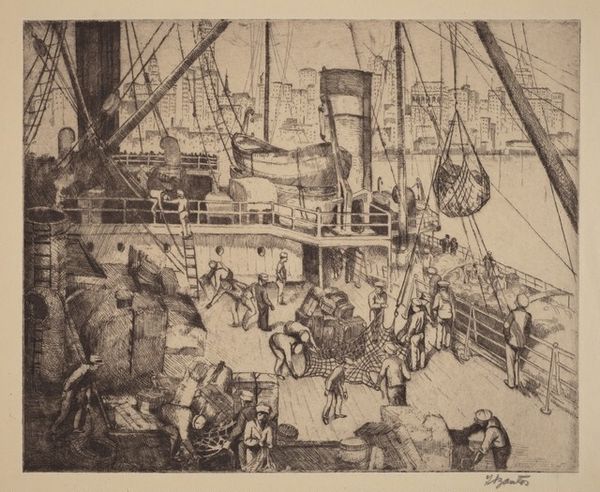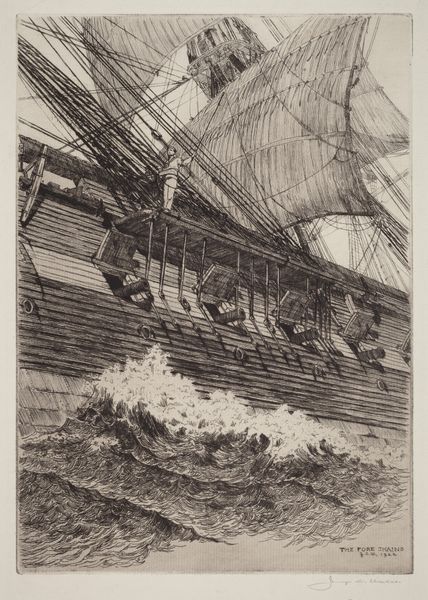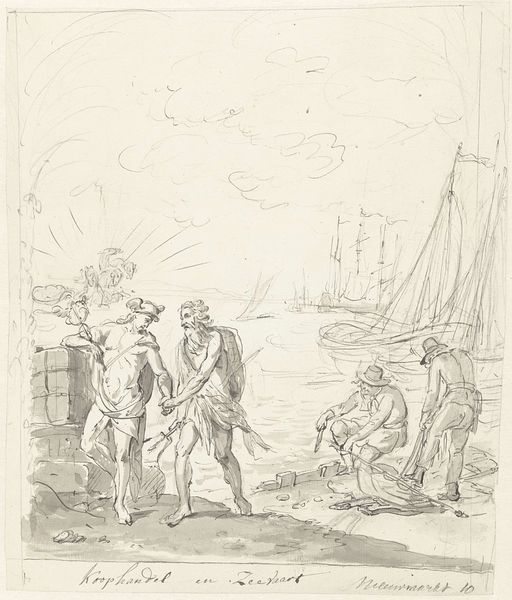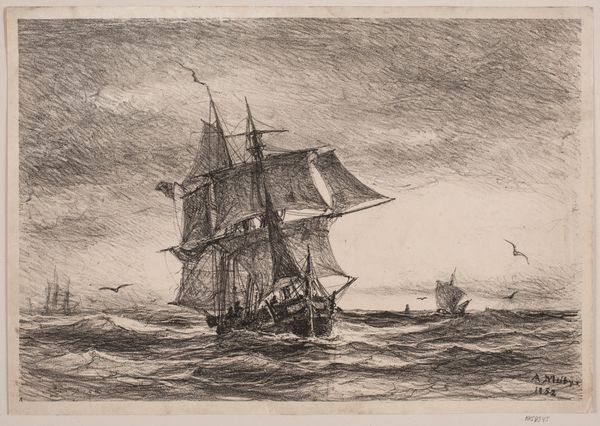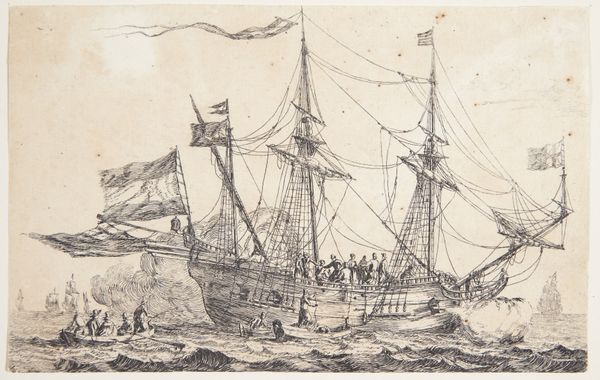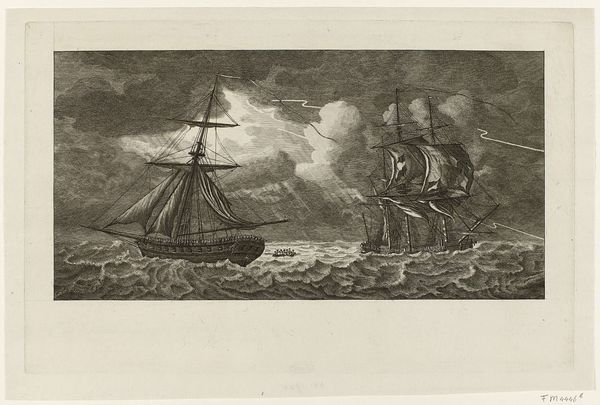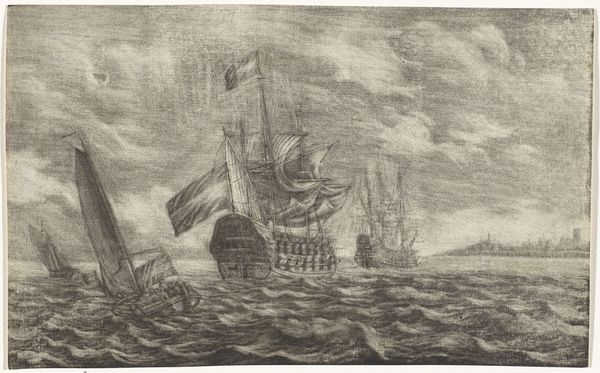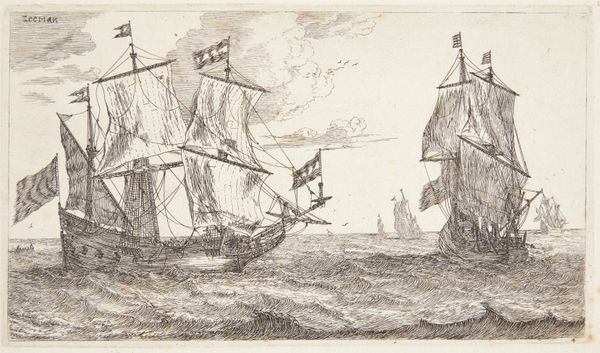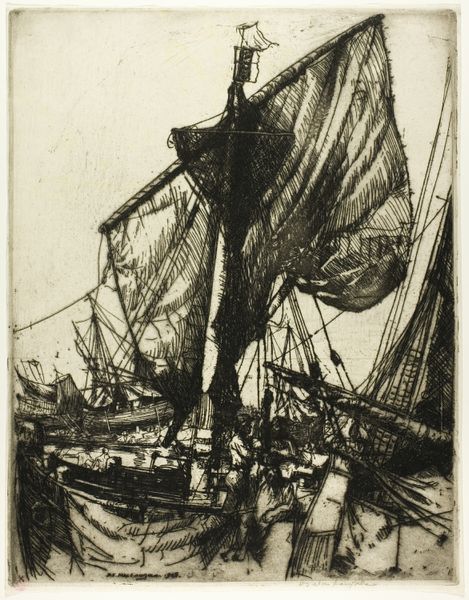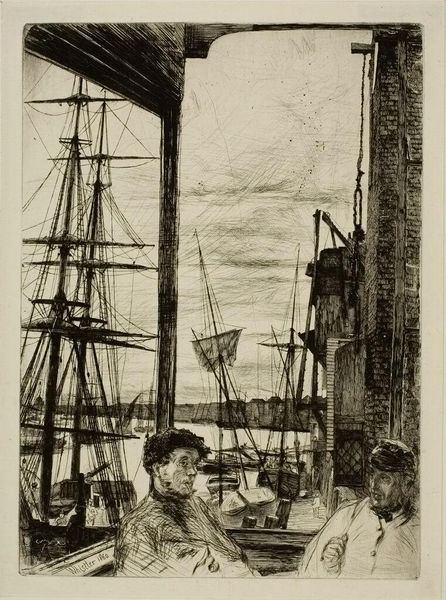
print, etching, drypoint
#
narrative-art
# print
#
impressionism
#
etching
#
landscape
#
figuration
#
genre-painting
#
drypoint
Dimensions: 9 7/8 x 14 in. (25.08 x 35.56 cm) (plate)
Copyright: No Copyright - United States
Editor: Here we have James Tissot’s "How Happy I Could Be with Either," an etching and drypoint print from 1877. It depicts three figures in a small rowboat, overshadowed by enormous ships. The mood is somewhat melancholic, don't you think? What can you tell me about it? Curator: Indeed. Consider the social context: Tissot, a French painter, thrived portraying the British upper-middle class. He benefitted from, and arguably perpetuated, a nostalgic vision of the past amid industrial change. This image of leisure class idyll, underscored by maritime power, operates as a social fantasy. Where does the implied "narrative" fit into this carefully constructed image? Editor: I hadn't thought of it that way. The title definitely suggests a romantic quandary between the two women! How much did Tissot control the narrative versus reflect it? Curator: An excellent question. Think about the function of art institutions then. Were galleries primarily showcasing individual "genius," or were they reinforcing cultural norms? Did the art market cater to the artist's vision or the patron's taste? Also, how does the medium--etching and drypoint--play into the overall social performance depicted? Editor: Interesting! So, the choice of printmaking, making the image reproducible, speaks to a desire for broader distribution of these societal values? Curator: Precisely. This isn’t simply a depiction of a scene; it's a subtle promotion of a lifestyle, and, crucially, of a particular vision of British power and privilege. Is it fair to assume, then, that we viewers are meant to accept that hierarchy and enjoy the artist's skillful rendering of its aesthetics? Editor: This has definitely changed my perspective. I was so focused on the individual narrative within the boat. I now realize the print reflects much larger social narratives. Curator: Precisely. It is a reminder that images, even seemingly simple genre scenes, always participate in larger socio-political dialogues.
Comments
No comments
Be the first to comment and join the conversation on the ultimate creative platform.
